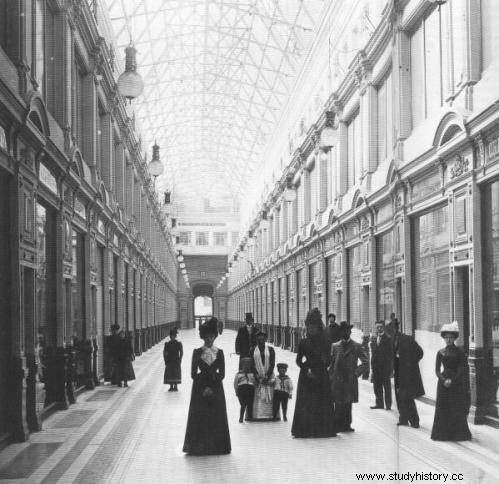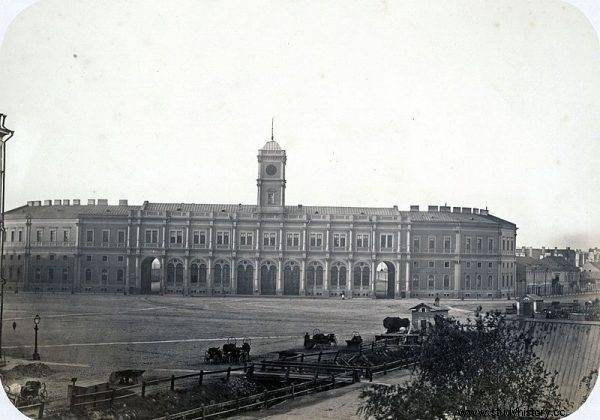Polish engineers, architects, inventors, nature researchers, and university lecturers were instrumental in the development of Tsarist Russia during the partitions. The role played by our compatriots was so great that the Russian professor Leonid Gorizontov called this period "the Polish century".
Describing the history of our countrymen in Russia, Mariusz Świder in his book "How we built Russia" not only emphasizes the achievements of Poles, but also destroys the myth of the empire as a land of cruel deportations and hard labor.
This is because for many inhabitants of the Kingdom of Poland, Russia became a place where they could fully realize their intellectual potential, gaining recognition, respect and money. Interestingly, after serving a sentence for participating in independence movements, Poles could even make a career.
Outstanding architects
Buildings designed by our countrymen still enjoy the eye on the streets of Moscow, St. Petersburg and many other cities. Stefan Gałęziowski (born in Warsaw in 1863) was the author of the reconstruction of the prestigious "Metropol" hotel on pl. Teatralny, in the heart of Moscow.
Wilhelm Franciszek Kowalski (born in 1868 in Sukhumi) was appointed chief architect of Pyatigorsk and Sukhumi.

photo:public domain Rudolf Żelaziewicz managed the construction of the first large department store in St. Petersburg, "Passaż".
Rudolf Żelaziewicz (born in 1811 in Warsaw) designed the stations on the Moscow-St. Petersburg railway line, as well as the Moscow Railway Station in St. Petersburg. He built barracks for the elite horse regiment of the Leibguard, designed and supervised the construction of the buildings of the Pawłowski Women's Institute [for well-born virgins - ed. aut.] in St. Petersburg. He managed the construction of the first large department store in St. Petersburg, "Passaż", located between Nevsky Prospekt and ul. Great Italian.
One of the most outstanding architects was Marian Peretiatkowicz (born in Volhynia in 1872), with the participation of whom several significant projects were implemented in the Russian capital. On 7/9 Prospekt Nevski the eye still pleases the Wawelberg Bank House, in the center of St. Petersburg there is the building of the City Hall, created in cooperation with another Pole - Marian Palewicz.
Explorers of Siberia
This vast area is associated with deportations, hard labor and suffering of our countrymen (often participants in uprisings) involved in political activities. Wrong, because for the whole crowd of Poles, Siberia and the Urals have become an area of scientific research and a way to make breakthrough discoveries.
Mariusz Świder devoted a lot of space to Benedykt Dybowski. This January insurgent received permission from the tsarist authorities to conduct research in Siberia. He was committed to penetrating the Amur, Usurian and Primorsky countries, as well as Kamchatka. He studied the flora and fauna of Lake Baikal. His merits for Russian and world science are evidenced by the fact that about 60 species of animals and plants were named after Dybowski (there is, among others, Dybowski's deer).

The text is based on the book "How we built Russia" (author:Mariusz Świder, publisher:Fronda, 2021).
Mr. Benedykt was supported by another January exile - Wiktor Godlewski, sentenced to hard labor. He was released very quickly and joined Dybowski. In the years 1864–1877, he studied the flora and fauna of Siberia together with him. They collected 370 species of birds, which enabled Władysław Taczanowski to write the work "Fauna ornithologique de la Sibérie Orientale" and its publication in the "Journal für Ornithologie" in Berlin.
Mariusz Świder quotes Dybowski's memoirs, who said about this work:" the entire ecological part, i.e. the so-called biological part, was compiled by Wiktor Godlewski for the work of Taczanowski ”.
In 1872, the two researchers were joined by Mikołaj Jankowski, who worked in a gold mine as a punishment for participating in the uprising. Five years later, Jankowski moved to the island of Askold, in the Far East, where he set up a weather station. The research results were sent to the Main Astronomical Observatory located in Pulków near St. Petersburg.
Railroad
Travel by rail, they are the favorite way for Russians to travel around their vast country. The first long-distance railway line was the Mikołajewska Railway (KM) connecting Moscow and St. Petersburg. It was put into use in the 1840s. Poles could not miss its construction.
One of them is Jan Ignacy Florian Koenig. After 1862, this military engineer served as the first director of the Nizhny Novgorod Railway (Moscow - Nizhny Novgorod), which - as Mariusz Świder writes - "under his leadership underwent rapid and spectacular development" .

Mikołajewski Railway Station in St. Petersburg
In 1867, a Pole inspected the Mikołajewska Railway to assess its activities. A year later he was appointed its director, " thus taking the most prestigious railway position in Russia and overseeing the fastest means of transport, which is key for political and economic reasons. between the two capitals of the empire. ”
Koenig died in November 1880. In recognition of his contribution to the development of the Mikołajewska Railway, its management funded him a magnificent tomb, located directly at the tracks of the Moscow Rifle Railway Station. In 2012, a bust of a Pole was unveiled in Nizhny Novgorod.
Source:
- M. Świder, "How we built Russia", Fronda 2021.
- Горизонтов Л.Е., Служить или не служить Империи? Поляки в России 19 века [in] Russian-Polish linguistic, literary and cultural contacts. S. Grybowski, W. Choriew et.al (eds.), Moscow, 2011
- Ciechanowicz J., In the vastness of Eurasia, Rzeszów, 1997
